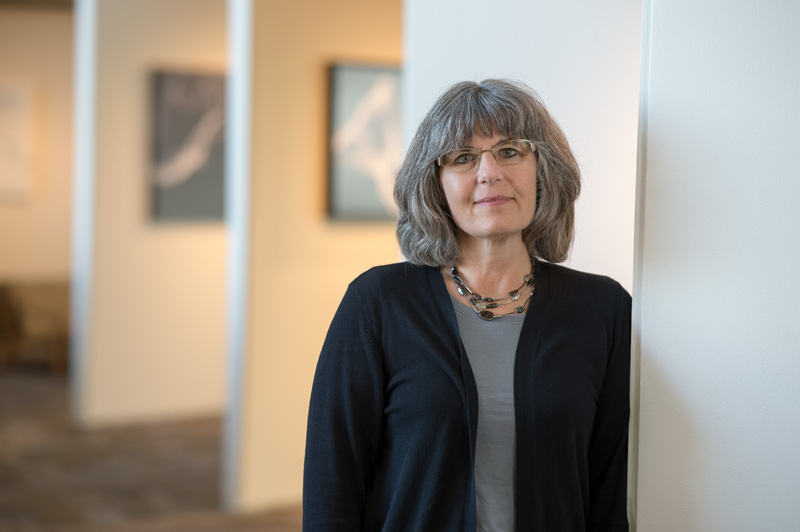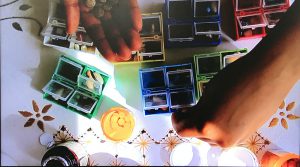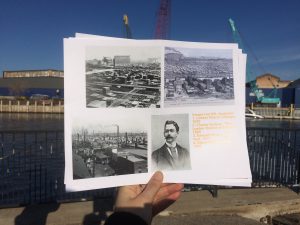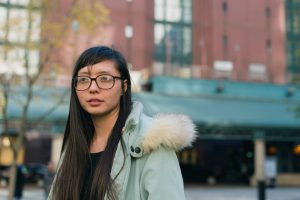In this series, we explore the idea of art institutions with a primary audience deliberately or functionally outside the field of art. These venues primarily focus on completely unrelated disciplines, but are also invested in art collecting, exhibition, or production.
For this installment, we look about an hour west of Chicago to the Fermi National Accelerator Laboratory, known as Fermilab: one of the most advanced particle accelerators in the world. There, government scientists research the frontiers of particle physics, from quarks to dark matter. Wilson Hall, the lab’s central building, is named for founder Robert Rathbun Wilson, a Manhattan Project physicist and the artist of several massive public sculptures that pepper the campus. It also houses the Fermilab Art Gallery, which Wilson established to explore his dual interests in science and aesthetics.
Search “art at Fermilab” online today and, in addition to the gallery and artist-in-residence program, you might learn about “art,” the laboratory’s software workflow protocol. “art is an event-processing framework for particle physics experiments,” the website explains. Though the name is a coincidence, the description is not entirely different from the way the lab thinks about its own gallery program: a channel for artists to learn scientific facts and for scientists to process their own research.
Georgia Schwender is an artist and has been the curator of the art gallery since 2001. I spoke with her about the intersections of art and science, what a scientist thinks about in an art gallery, and why a National Laboratory might want to host artists.
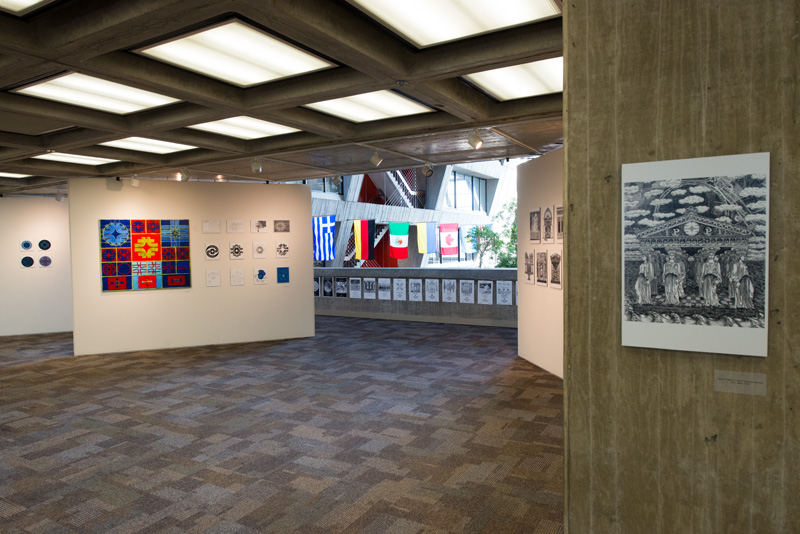
Nina Wexelblatt: Can you tell me about the current art program at Fermilab? I know you have both a gallery and a residency.
Georgia Schwender: We have a review committee that chooses the artist-in-residence. That’s a neat thing that we try to keep changed up every year so we don’t fall into a pattern. We want this program to get many different viewpoints from scientists and artists. It’s a little bit different than the art gallery, which has a committee, and that doesn’t change radically, but the artist-in-residence program does. In my head the two programs feel very different. Where they converge is that we really try to give the artist-in-residence an exhibit at the end of their stint. So far it’s worked out really well that all of our artists-in-residence have been really prolific. But that’s not one of their goals.
NW: Do you tend to choose artists who are already engaging with hard science? Have you picked people whose work might be a more surprising overlap?
GS: I like to see that they can understand science. That’s in so many different ways, but yes, I think we do tend to lean more toward that. Adam Nadel [2018 artist-in-residence], for instance, has done photojournalism with works on water down in the Everglades in Florida, and he did a big project on malaria. So even if it’s not particle physics, we can see by his work that he knew how to interact with agencies and people that were scientists and interpret the work. It’s important to me to get an artist who can interpret work and then present it. That’s part of the residency. We do want them to be good advocates of what we’re doing at Fermilab.
NW: What is the process like when an artist is in residence? What kind of access or exposure do they have to the scientists or research going on at Fermilab?
GS: What we do in the beginning is give them tours. We have two full days of tours booked for Adam when he comes, for meeting people and trying to get a sense of what Fermilab does here. That has been consistent with each artist-in-residence. We want to present them with as much information as we can, and then we can go from there. We’ll overwhelm them for the first two days, and he can process it. I try to give him direction and then listen to him about what he needs and wants from us.
NW: Has it turned into a collaboration with other parts of the lab?
GS: Yes, very much. Ellen Sandor, our artist-in-residence before [2017 artist-in-residence] Jim Jenkins, heavily collaborated, because she was really dealing with neutrinos. She had key scientists. When she would come, we would have interviews and time that they could really sit down and talk. She’d ask them, am I doing this right? Is this really how neutrinos act? They’d clarify and give her direction. With her, the science was very, very important. It depends what the artist needs to understand and how they’re interpreting it. If it’s very close to how the science works, [they need to] get it right, so they aren’t getting false information in there.
[vimeo 249719851 w=640 h=360]
NW: Who do you see as your primary audience?
GS: It’s changed over the years. After 9/11, Fermilab was closed to the public. We had to send in really specific guest lists when we had our openings. But in recent years, it’s been reopened, so my audience has really grown. It’s changed very drastically over the years, but it’s always been open to the employees. Recently, my position became attached to the office of communication, so that also changed my audience. I became really aware of, who are we making this art for? Like you said, who is our audience? It is still mostly employees, but in order to get the community aware of what Fermilab does, I also have to be aware of the public that comes in and sees art, and how they can understand it. I’ve had more gallery talks, and tried to make events more easily accessible to the public.
NW: It’s a unique position for a gallery, because while it’s a bit removed from the Chicago art world, you do have a robust community of scientists who are viewing the art.
GS: Scientists view art differently than the way I do when I go to an art gallery. Their vocabulary is different. It’s kind of a thin line to walk on. Scientists are so passionate about their work, so you can’t not get the science right, and you don’t want to offend them by making things that aren’t truthful. It’s a really fine line. I don’t know how to put it into words. We do want more scientists to look at the work and realize that this intersection of art and science is really beneficial to everyone. Sometimes scientists get this, and sometimes they don’t. It’s an education that we’re doing for everybody, including myself.
NW: I can imagine that some of the artists would want their work — even if it’s not the most scientifically accurate — to change the way a scientist thinks about something or looks at the work they’re doing. There could be something provocative in it beyond any factual basis.
GS: Right, and also another really important aspect of this is that when scientists realize that the work they’re doing is important to an artist, I think that it’s a really good morale booster as well. We all need that. Funding is always iffy. It’s really hard work making science, as well as art. We can use both to uplift ourselves.
NW: So having the gallery feels like a service to the lab.
GS: Oh, it’s great. It’s like my personal art gallery. It’s so much a part of me, like oh this is my house! It’s not, but it feels like it.
NW: Do you have a science background yourself?
GS: I worked at Brookhaven National Laboratory from 1988 to 1991, as senior photographic specialist, mostly darkroom work. Digital photography did not exist. I did some photography, but mostly as an assistant. In the darkroom, we processed film, made prints, even made transparencies for the scientists’ talks. Overhead projectors and transparencies! Not computers and powerpoint. I feel like a dinosaur saying that. My Dad, George Schwender—I do share his namesake—worked at BNL as an engineer. I felt very at home in the setting of a National Lab. The science runs deep in my family.
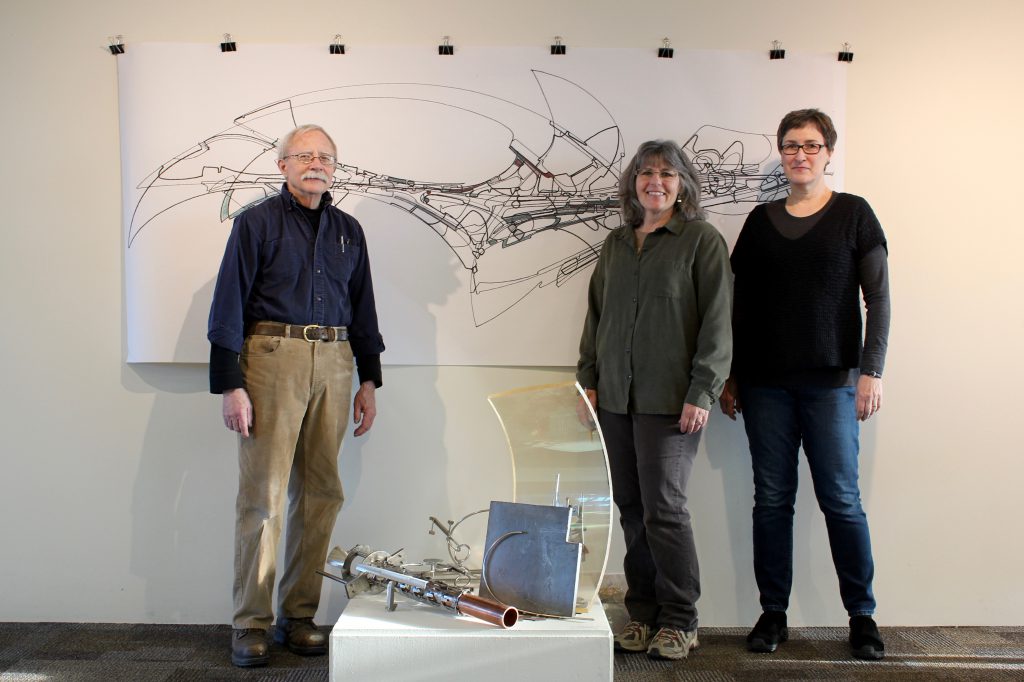
NW: How did you get involved with the gallery at Fermilab?
GS: My husband is a physicist, so we came from Edinburgh to Fermilab for a postdoc. I saw that it had an art gallery, and I thought, this is great! So I got an exhibit here, and then became involved with the committee [for the gallery], because it was run by volunteers, which it still is. I was installing shows and helping out with press releases. Then the position came up, and it was put out to bid, and I was offered the job. It was perfect.
NW: You’re a photographer, and many of the shows in the gallery feature photography. Do you think there’s something about the medium that lends itself to the kinds of interdisciplinary practice?
GS: I really try not to show too much photography, because I’m biased towards it. But no, I think it depends on the artist’s views and what they’re trying to say. Any medium can do that. With Adam, since he is a photographer, that’s going to lend itself to different artwork to what Jim does, which is mostly sculptures and mixed media. It feels much more like what’s inside his head, as opposed to Adam, where it’s what he’s visually seeing. It’s much more of a concrete image. I’ve had exhibits with the Fermilab Photo Club, which is really concrete. I really try to mix up what we show in the gallery, because I don’t want it to be all outward-looking. I want it to also be the inward-looking. But I don’t want to overwhelm any of my audience, who may be more in tune with the outward-looking. I try to get a good mix.
NW: Are there precedents in art history that inspired you to think about this intersection of art and science?
GS: I’m really inspired by some of the traditional early photographers. They had to do so much chemistry. They had to work so hard to figure it all out. Nowadays, we’re not having to go back to the origins and remake it. Right now, the art and science connection is really growing. The past five or ten years, people are becoming more interested. They maybe aren’t as afraid of the science. It’s important that we keep this conversation alive that science is real, and we can understand it from our point of view, so long as we keep the basis of the facts.
NW: This is a fraught moment for facts.
GS: It’s really important for us to keep the momentum. The work that’s being done here is really important and it can reach out to more people. As a human race, we need to stay curious and educated. Even though my education isn’t the physics journals, it’s another way to get that information out to people. On Monday, I was at the Field Museum about women in science, and I had never done that before.
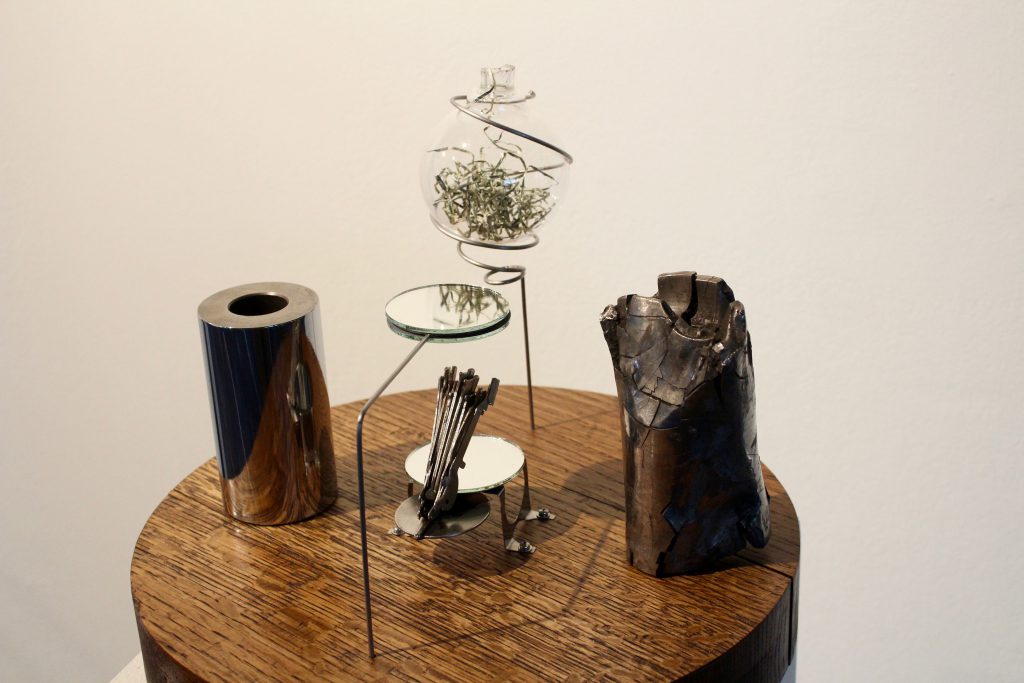
NW: It’s interesting that you mention the women in science event. Diversity and access are huge problems in both the art world and in science—maybe in different ways, maybe not. Is that something you actively think about?
GS: Fermilab is actively trying to be more diverse. It’s in our training. It’s in the workplace. It’s very prevalent and talked about right now.
NW: Have you noticed the atmosphere changing?
GS: Yes, I see a big difference. I’ve been working with National Labs since I started my career. I started working at Brookhaven National Labs in the photography department. When I’d go to lunch, it was all men. The women were the secretarial admins. You didn’t see a population other than white men. Nowadays, if you go into our cafeteria, Fermilab is trying to get a more diverse population into upper management. You walk the halls and it’s totally normal to hear all different languages — languages I don’t even recognize. They are trying to have more women in science, more African Americans in science. They have all kinds of programs here, like target programs for high school students who aren’t usually exposed to this environment to do classes. It’s great, and it’s long overdue.
NW: Are there models for the kinds of institutional collaboration you do, or is Fermilab unique in your view?
GS: In the United States, it’s unique. There are artist-in-residencies with the National Parks, which is very strong. Within a science-government facility there aren’t many others. But CERN, in Switzerland, has a really strong arts and science program and they fund it very well. We’re having to look a little globally right now. Hopefully, more of these programs will pop up with Brookhaven National Labs or other National Labs. It would benefit their community just as well.
We’re also always trying to grow more connections. I’ve had that with individual galleries locally, like Andrew Bae. Water Street Studios is a local gallery here in Batavia, the same town we’re in. We’ve done collaborations with them for workshops and exhibitions, like Art@CMS [with CERN]. It’s not an everyday thing, but we do have an exhibit coming up where we’re working with Fermilab Natural Areas. So even if it’s not outside people, I try to grow our community here as well. With the Jim Jenkins exhibit that’s up now, we’re having a gallery chamber concert, and Jim will have a sculpture and multimedia event going on as well. We’re always trying to push it a little bit further and add another thing
Featured Image: Georgia Schwender stands in front of artwork at Fermilab Art Gallery. Photo by Reidar Hahn. Courtesy of Fermilab.
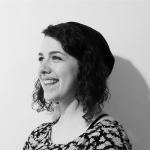 Nina Wexelblatt is a Chicago-based writer and curator interested in the intersections of art, ecology, and technology. She is the current Curatorial Research Assistant at the MCA Chicago. Nina earned a BA from Yale and MA from Williams College. You can follow her on Twitter @nina_rrose.
Nina Wexelblatt is a Chicago-based writer and curator interested in the intersections of art, ecology, and technology. She is the current Curatorial Research Assistant at the MCA Chicago. Nina earned a BA from Yale and MA from Williams College. You can follow her on Twitter @nina_rrose.
